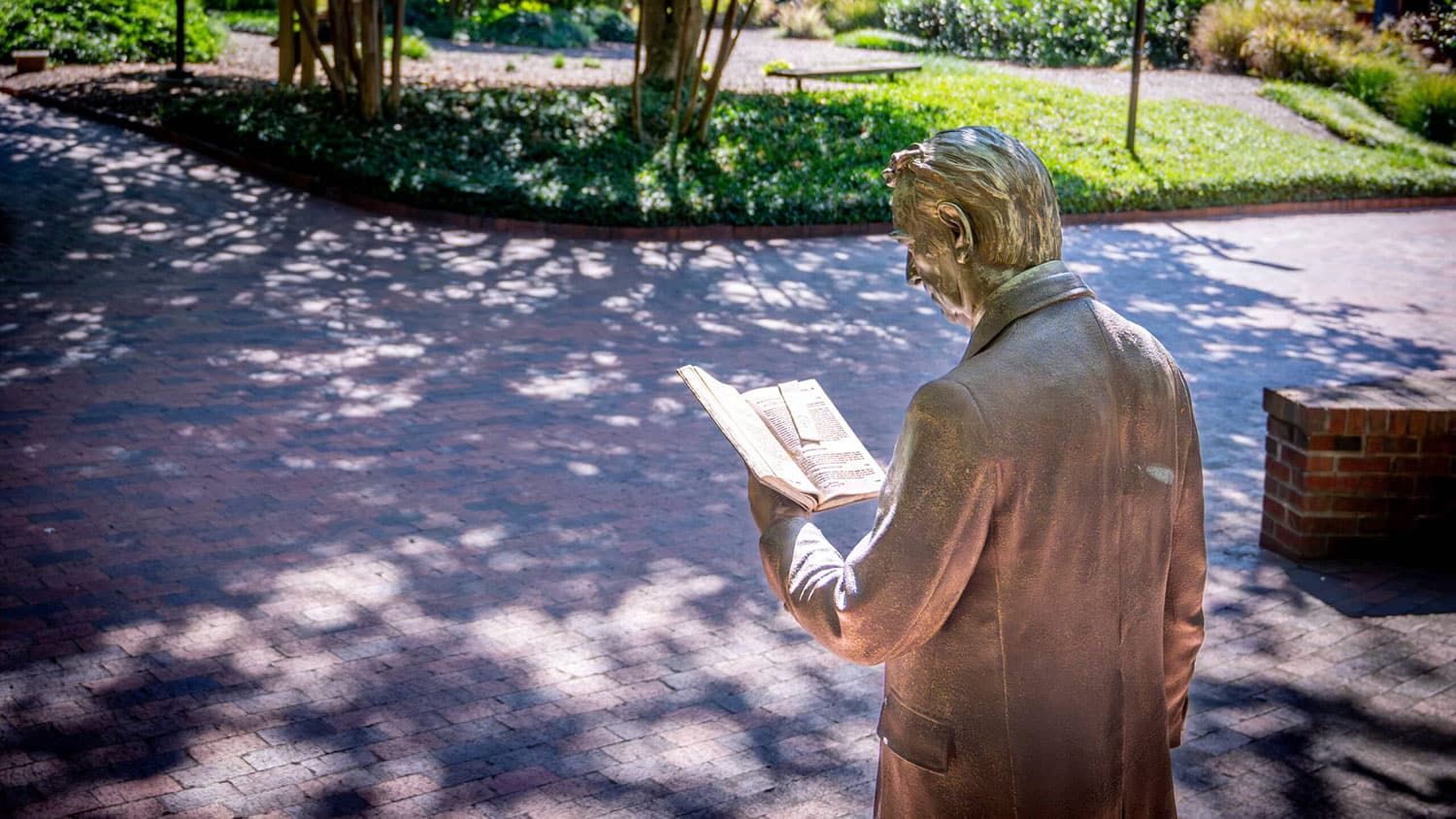Disney Whirl
Working at Walt Disney Imagineering may rank as one of the planet’s most sought-after dream jobs, especially for creative professionals. Four students from North Carolina State University got to sample the magic this summer as finalists in Disney’s ImagiNations Design Competition, winning a 10-day trip that took them from the small world of Raleigh to the fantasyland of Imagineering’s Southern California studios.
Ten days turned into summer internships for two of the students: Steven Varela, who graduated this spring with a degree in electrical and computer engineering, and Ashley Wagner, a senior majoring in art and design. The other members of the team include Morgan McCormick, an English major who recently graduated with a concentration in creative writing and a minor in Japanese; and Corban Prim, a senior in art and design with experience in video production and animation, who’s been offered a one-year internship with Disney’s Advanced Technologies Group after he graduates.
“This is the perfect job. I’ve never had an experience like this,” Varela says. “I don’t think any of our lives are ever going to be the same. It’s the experience of a lifetime.”
To secure a spot as one of three top teams in the contest, the students designed a motion simulator thrill ride, called Mickey’s Quest to Magma Mountain, that utilizes a circular seating arrangement to give riders an immersive 360-degree, 3D experience. The project was designed so that each time guests ride, they get a new view of the action and hear unique dialogue, but always experience the full story.
During the trip to Southern California in June, the students got the opportunity to polish their project in the real work environment of Imagineering’s offices. Magma Mountain took second place in the contest, which has been held annually for 18 years to encourage students with diverse skills to consider careers in creative and technical fields, including digital arts, engineering, and next-generation interactivity.
For Prim, the trip to California cemented his plans to pursue a career in media production.
“I’ve found my calling,” he says. “I feel like the opportunities are endless.”
Imagineering often hires student finalists to fill the ranks of its creative workforce, which is made up of professionals in more than 140 diverse disciplines, including artists, architects, engineers, writers, machinists, landscape designers, model makers, sound technicians, carpenters, producers, accountants, filmmakers, schedulers, and estimators.
In fact, Prim says, the trip to the Imagineering offices, “was like a nonstop, 10-day interview.”
It also gave the students the chance to work and network with some of the top creative professionals in the industry, like fourth-generation Imagineer Mike Iwerks, the great-grandson of Ub Iwerks, the co-creator of Mickey Mouse and Walt Disney’s business partner in the 1920s.
“You’d think it would have been intimidating, but everyone was so laid back and personable,” Prim says. “I made so many friends.”
Varela had a similar experience.
“I’m surprised by how relaxed it is here,” he says. “Everybody is wearing Hawaiian T-shirts and some people ride scooters to their desks. It’s incredible that we can have fun and do incredible jobs making incredible attractions.”
Walt Disney Imagineering creates – from concept through construction – all Disney theme parks, resorts, attractions, cruise ships, real estate developments, and regional entertainment venues worldwide. The name Imagineering combines imagination with engineering.
NC State graduate student Elena Page knows exactly how the students feel. As an undergraduate in the College of Engineering in 1995 Page took first place in the ImagiNations competition and went on to work at Imagineering for nearly a decade.
Now a graduate research assistant in the Advanced Media Lab in the College of Design, Page coached this year’s NC State team.
“We met once a week to discuss their ideas,” she says. “But before they did anything I asked them to do some research and come up with stories that would be interesting to tell. It always starts with a great story.”
Page says it was important for the students to leverage their diverse skills and to learn to work together.
“What was really valuable was not just doing the project, but being on a collaborative team,” she says. “In that industry, you’re always working on a team.”
Once they had the story line worked out, the students spent several months developing their contest materials, including a video trailer, three-panel promotional display, storyboard and description of key moments in the ride. In addition to the creative content, the students had to develop a marketing plan identifying the target audience for the ride as well as a blueprint for how the ride would be laid out at the theme park.
In the end Page, like the Imagineering judges, was impressed by the sophistication of the students’ project.
“They’ve created a story with a strong visual sense and design and demonstrated the ability to communicate and package and engineer it,” she says. “They’ve proven they can be successful.”
- Categories:


